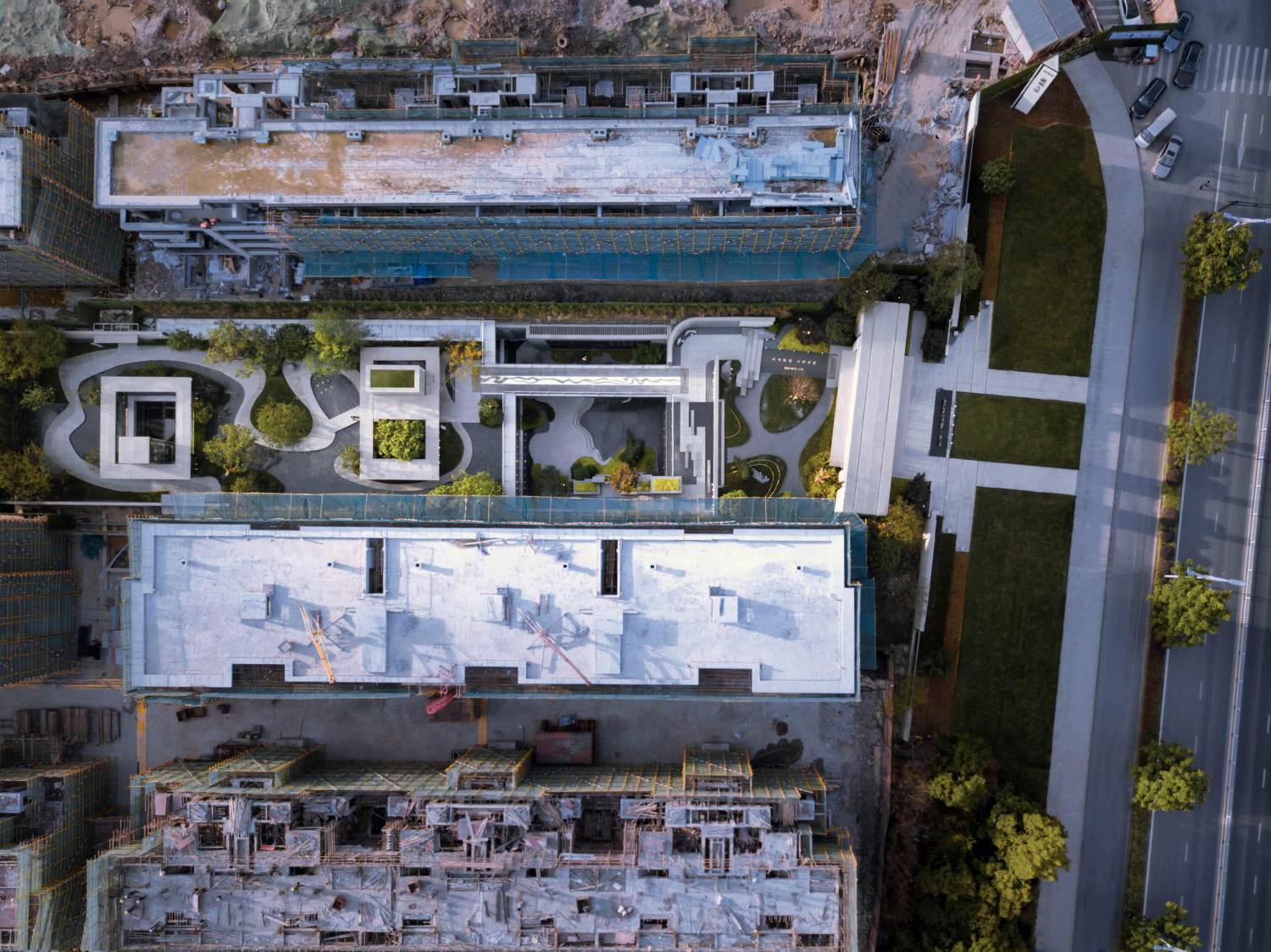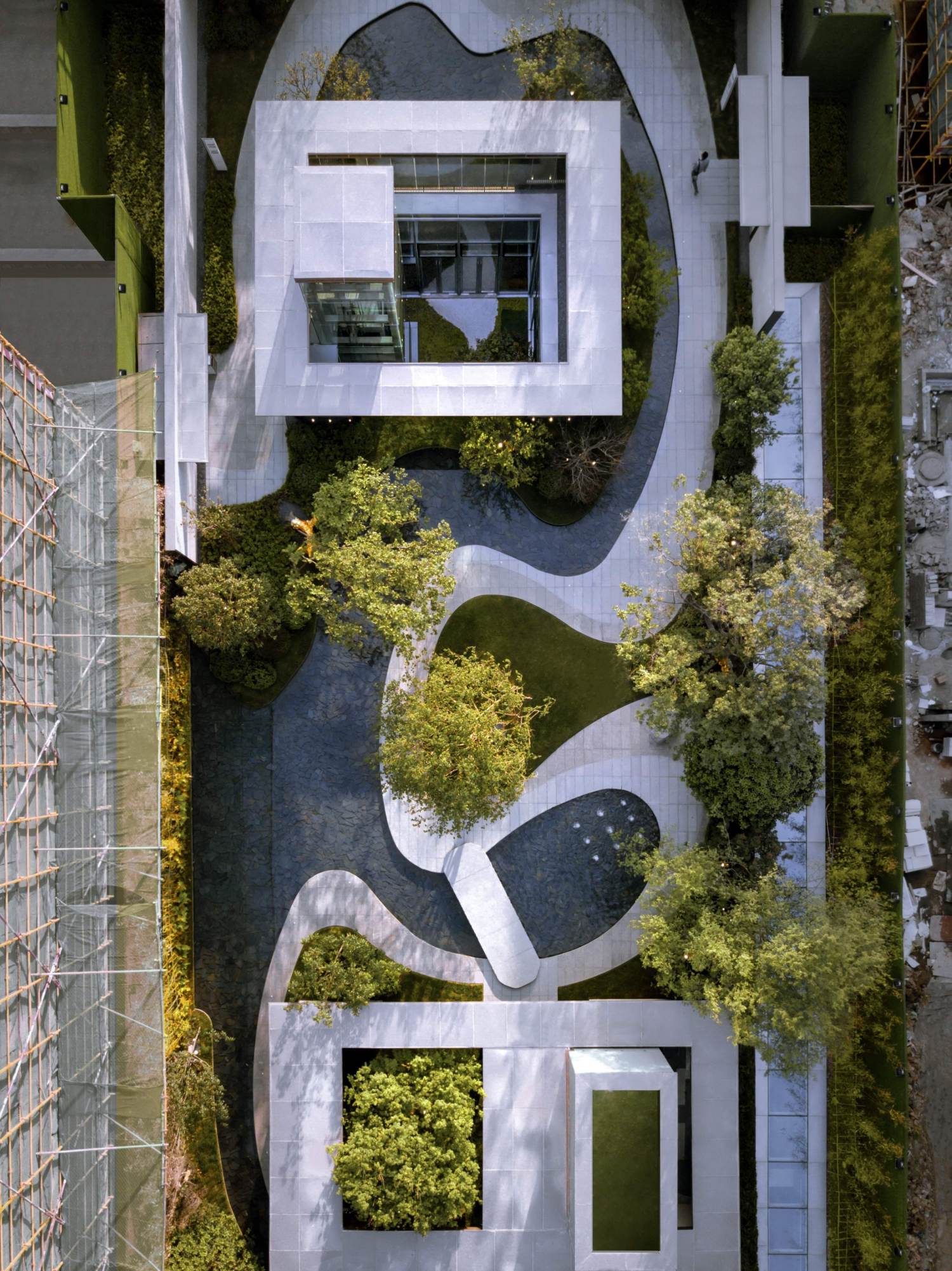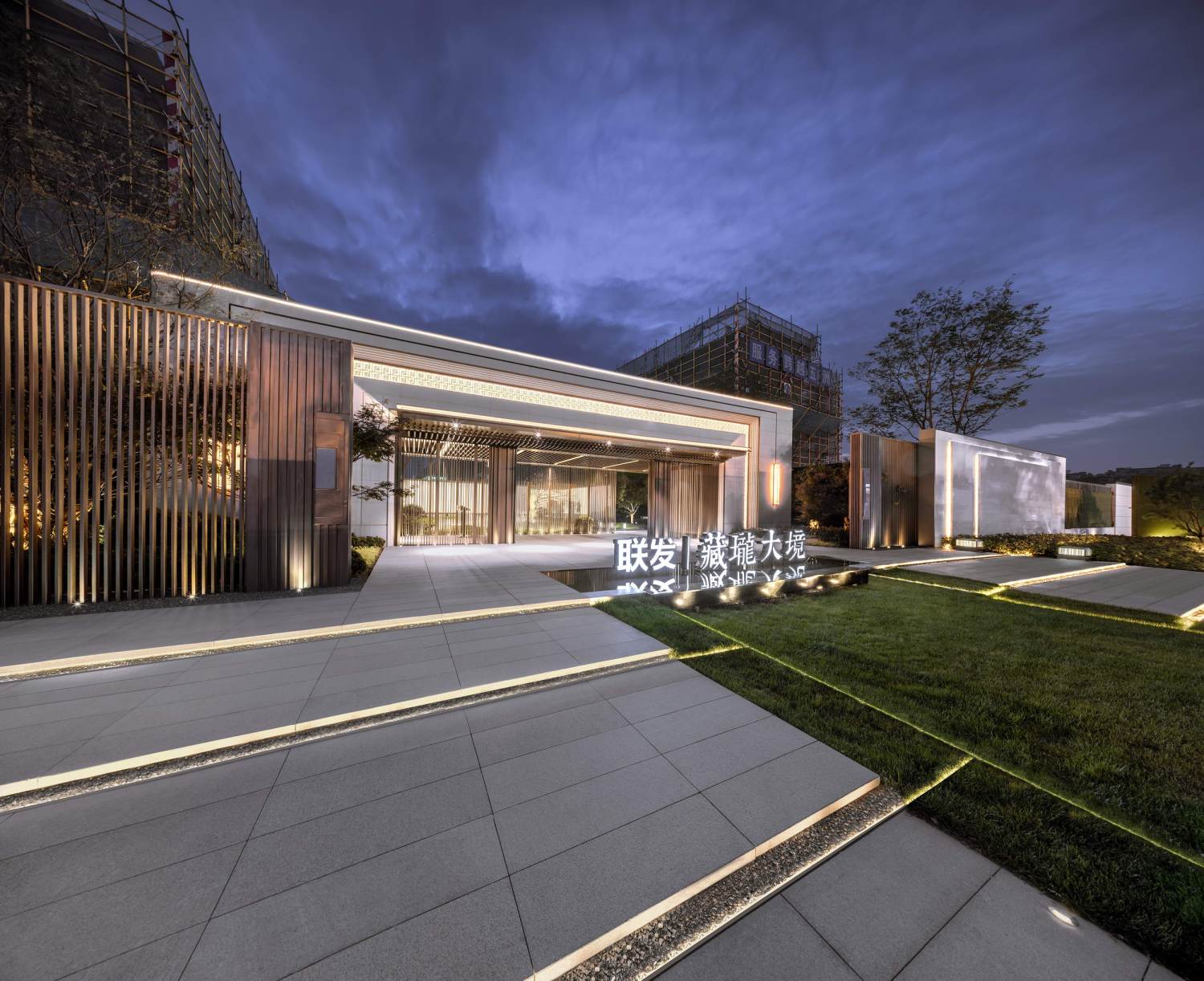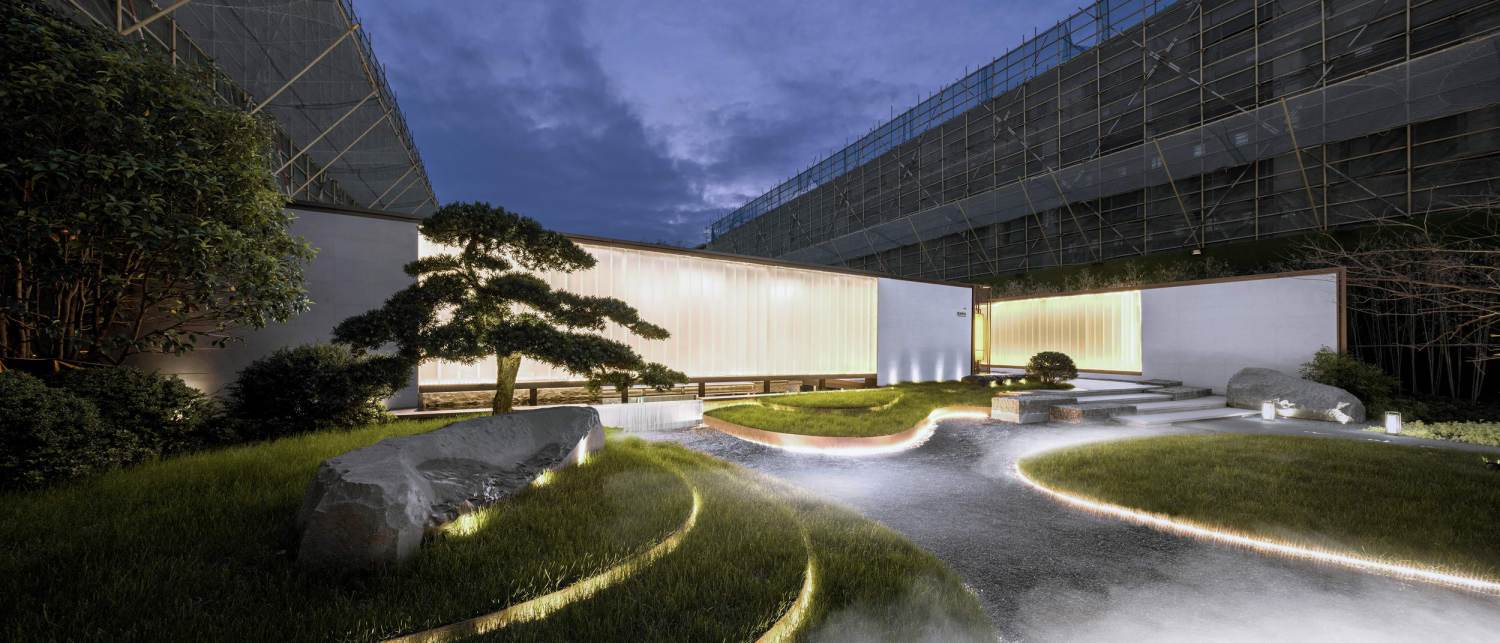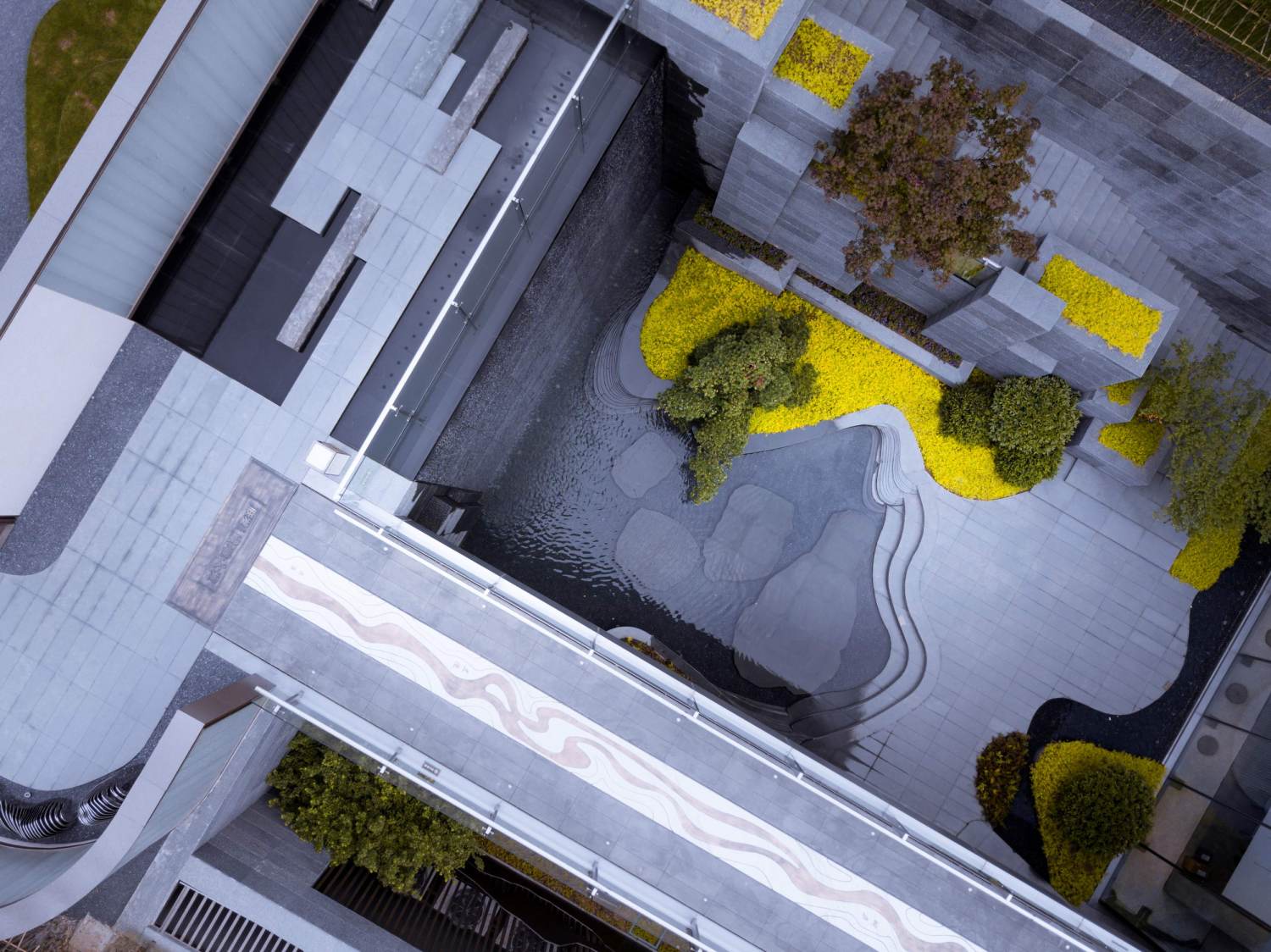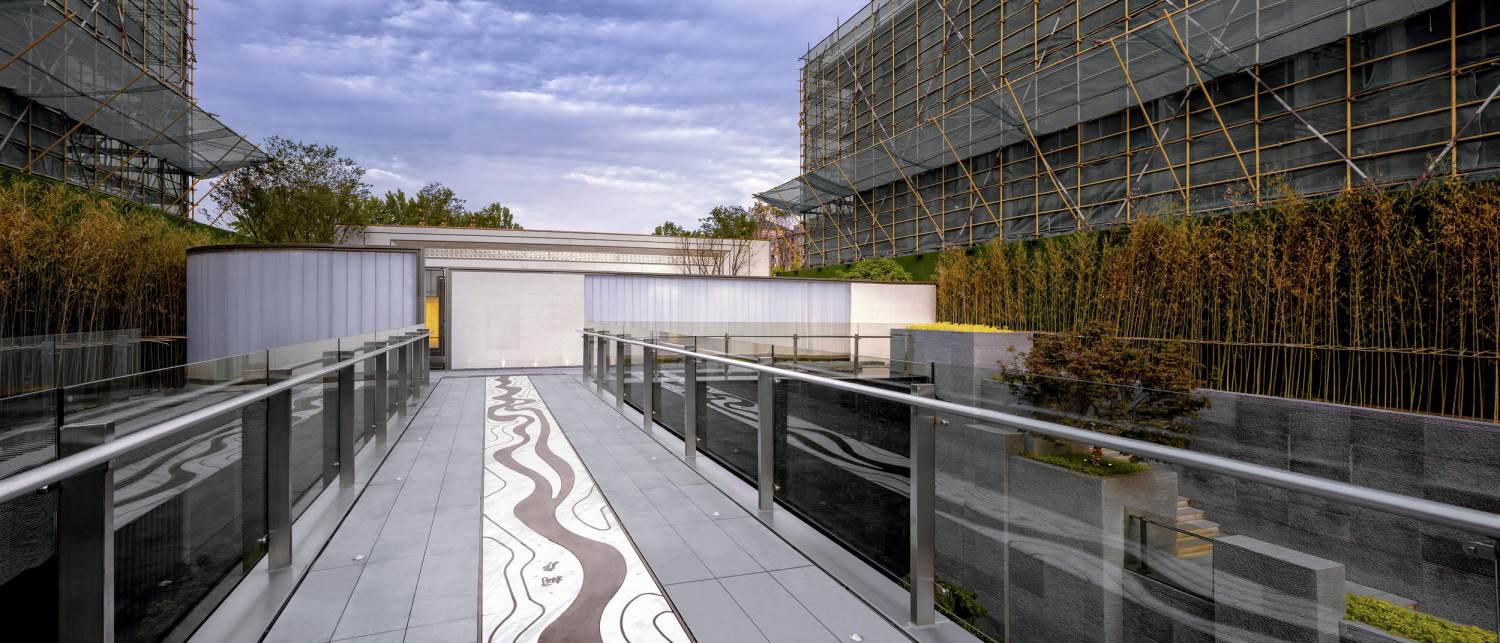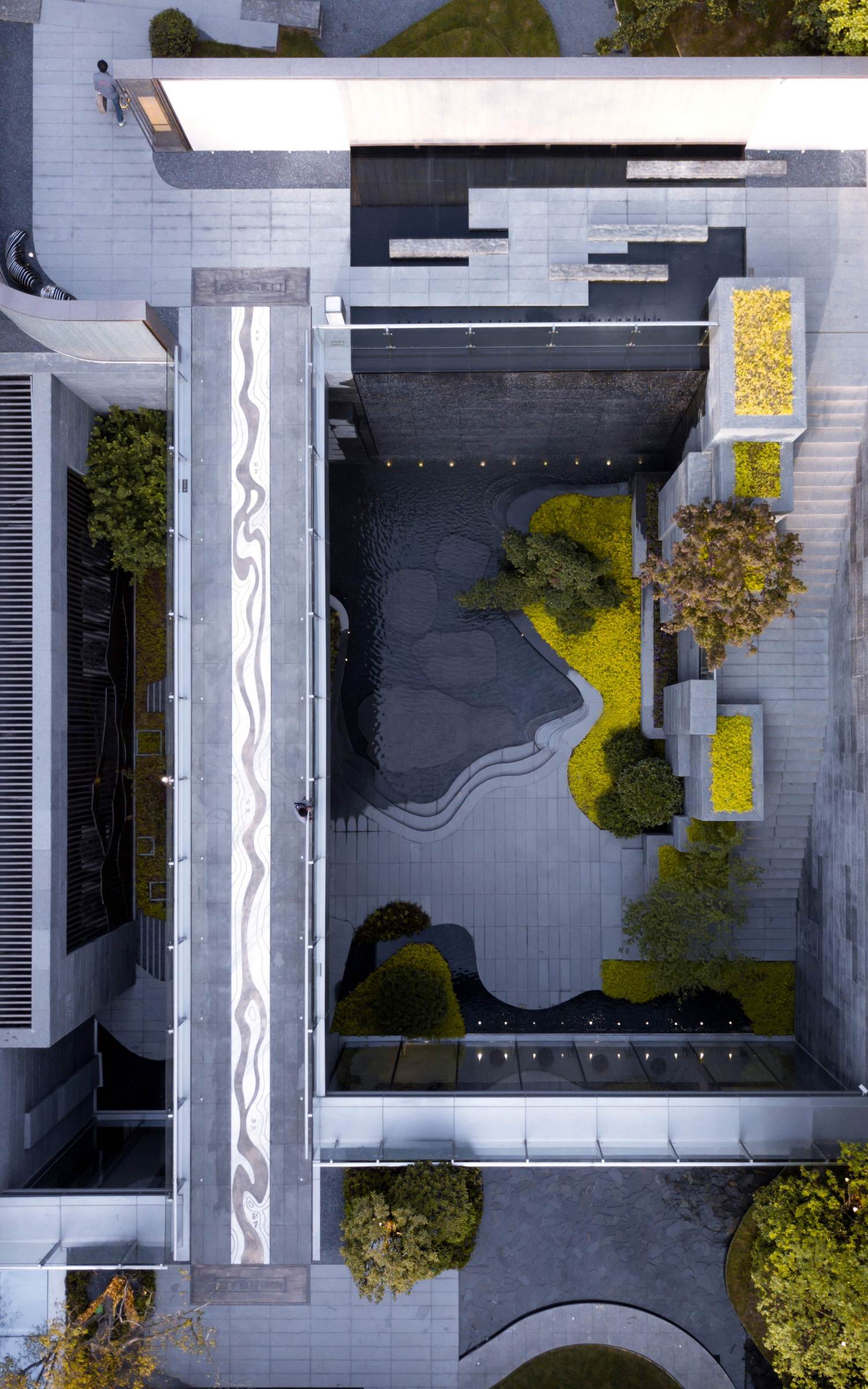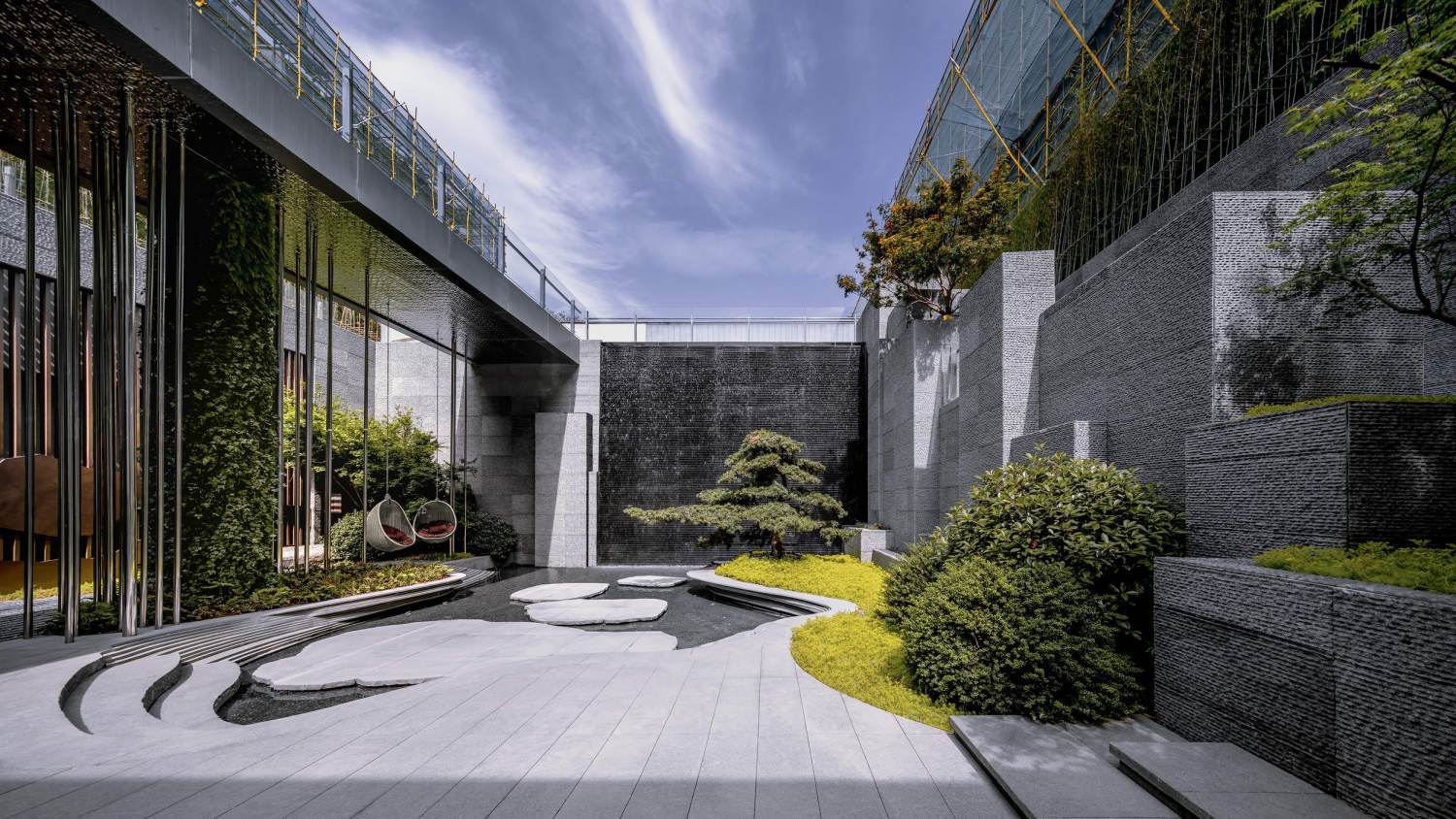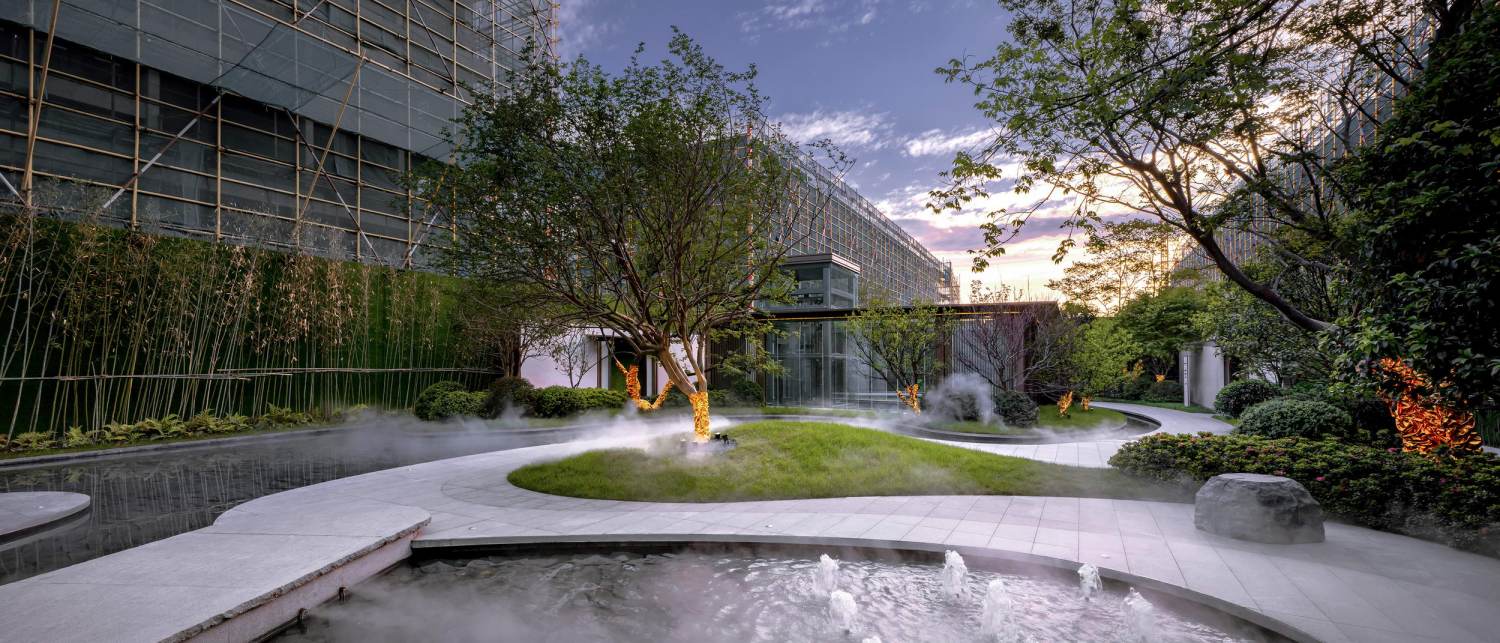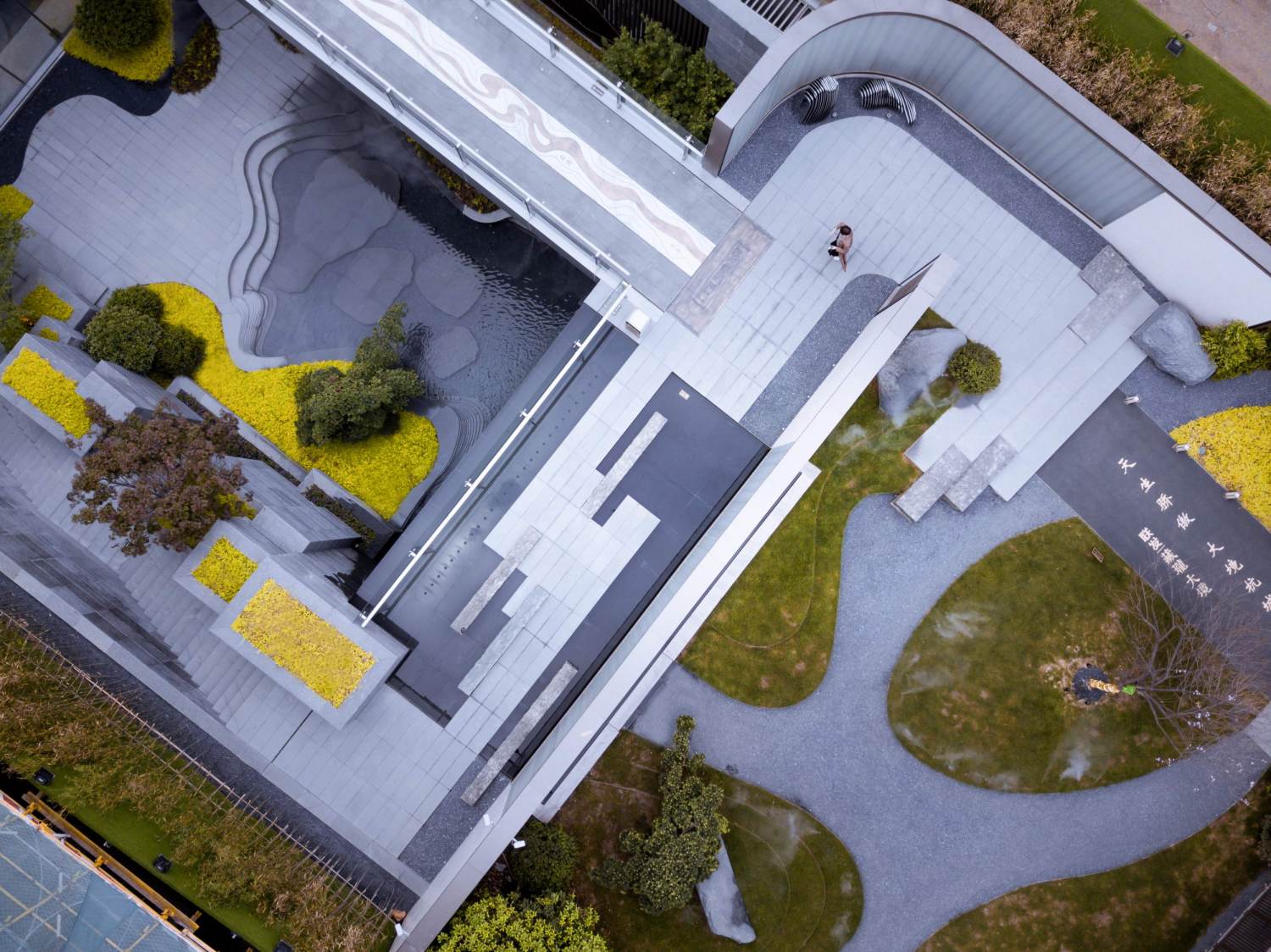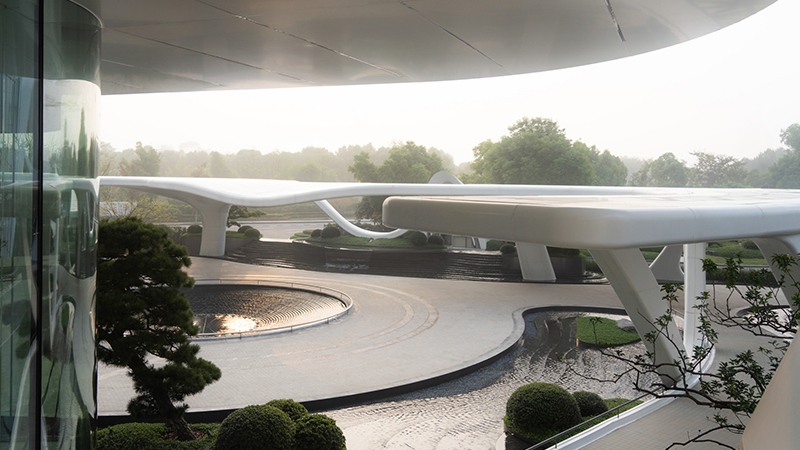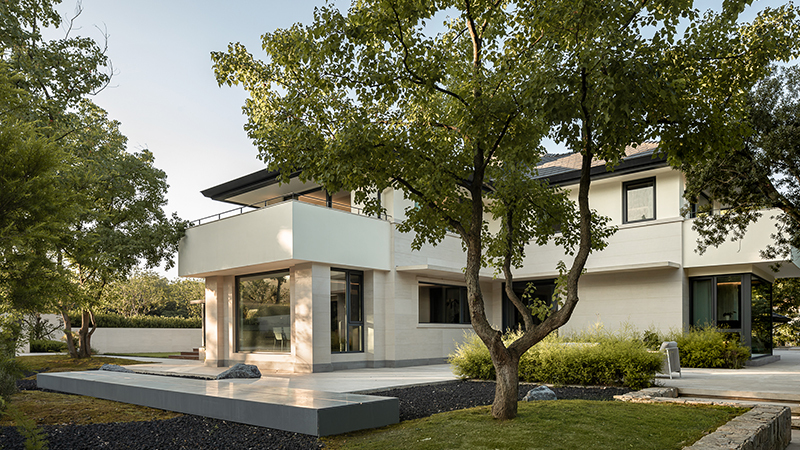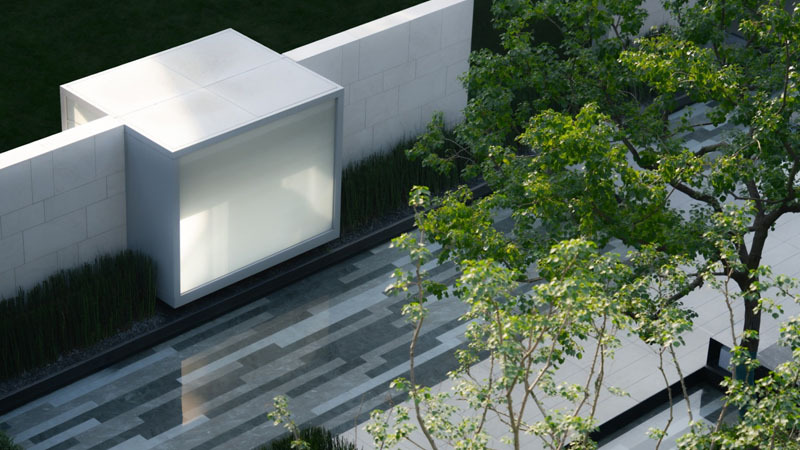距今5300-4500年左右,良渚文化发展达到高峰。其中手工琢制的玉器,是先民美学的智慧结晶。玉石质地温润,其表面布满细如发丝的几何图形,显得简约质朴。项目的室外景观延承了同样的美学理念,化繁为简,于细节中见雅致。
Around 5300 to 4500 years ago, Liangzhu culture reached the peak of development. The manually made jade ware is the crystallization of wisdom on aesthetics by our ancestors. Jade has smooth and mild textures with simple geometric figures, which are also similar to hairlines. The outdoor landscape of the project inherits the same aesthetic concepts. Complexity is turned into simplicity, revealing elegance through details.
相传荀子晚年曾经来到良渚,居荀山读书讲学。一山一水,这份近在咫尺的山水情缘,历经千年未曾改变。而设计师融山水元素于设计中,力求营造出现代简约的艺术空间。
According to legend, Xuncius came to Liangzhu in his twilight years. He lived in Xunshan, gave lectures and focused on reading. Among every hill and every stream, innermost emotions and feelings have never changed over the millennium. Landscape designers strive to create the modern and simple art space by incorporating landscape elements.
透过正面的金属格栅,内庭的景色随着脚步一起若隐若现,两侧隔墙显得干净利落,如同山水画卷的留白,任由光影肆意的游走。再上石阶,才发现玻璃屏风实为前后两扇,步入当中,恍然入画般。
Through the metal grills in the forefront, the indoor views appear partly hidden and partly visible. The walls on both sides look smooth and clean, as if the landscape paintings leaving blank shadows at random. Walking above the stone steps, people find the glass screen are actually two fans that look like drawing to them.
从来以为观山水意境,无外乎“高远、深远、平远”,未曾想屏风过后,却是一桥飞跨东西,环顾四周视野内不见美学馆踪影,移步桥上突然发现脚下的桥面更值得伫足观赏。
They always think artistic conception of natural landscape is just about “lofty, far-reaching, profound”. If people look around, they do not see aesthetic museum. When going to the bridge, they suddenly find the bridge floor under their feet is more worth watching.
对于现代人来说,快节奏的生活,不断撕碎着个人时间和内心的专注力,找一处能承载内心平静的空间,藏身于此,听瀑观水问天,显得弥足珍贵。
For modern people, fast paces of life constantly interrupt personal hours and inner attention. It is extremely precious and rare for them to search for a tranquil place to hide themselves,listening to the waterfall and viewing the sky.
“山重水复疑无路,柳暗花明又一村”,回到桥上穿过连廊,一溪山涧左右环绕。来到环路的尽头回转身来,见一处连廊藏于林木背后,四面玻璃围合,一直通往下面的美学馆。从馆内望去,玻璃天井仿佛一块封存记忆的琥珀,迎着天光,接受人群的仔细端详。
“With mountain chains and rivers ahead, I thought there was no way through. Shady willow trees and brilliant flowers keep one more village out of sight”. When reaching the end of winding road and turning around, they find a corridor hiding behind the wood with glass enclosure, which lead all the way down to the aesthetic museum beneath it. Seeing from inside the aesthetic center, the glass skylight looks as if a piece of amber, sealing up people’s memories. The amber is carefully observed by people under the glass skylight.
黄庭坚在《寂住阁》里感叹:“庄周梦为胡蝶,胡蝶不知庄周。” 古往今来,这份逍遥愉悦被多少人所向往,设计师通过现代手法,将良渚的山水记忆融于艺术空间,追求自然的创意生活,从意境到心境,最终营造一处心灵安放之所。
In Living in Peaceful Pavilion, Huang Tingjian sighed, “Zhuangzhou dreamed of becoming a butterfly, while the butterfly was not aware of Zhuangzhou”. From ancient to modern times, so many people have yearned for such joviality and pleasure. Designers incorporate people’s memories of landscape through modern approaches in Liangzhu. They strive for natural and creative life. Eventually, the purpose is to find a tranquil to rest their heart and soul.
文中照片及文字说明由玖鹿设计提供。
The project photos and descriptions provided by NCD Design Studio.
项目名称:杭州联发·藏珑大境
委托业主:联发集团
项目地址:杭州良渚
项目设计 & 完成年份:2018年 & 2019年
设计面积:4660 ㎡ (首开区面积);94927㎡(总面积)
设计公司:广州山水比德设计股份有限公司(方案设计);杭州玖鹿景观设计有限公司(深化设计及施工图设计)
摄影:王骁
文章撰写:玖鹿设计
Project name: XUDC · Zanglongdajing in Hangzhou
Client: XUDC
Location: Liangzhu, Hangzhou, China
Project design & completion year: 2018 & 2019
Design area, 4660 ㎡ (opening area area); 94927 ㎡ (Site area)
Design company: S.P.I landscape Group(Concept design); NCD Design Studio(Detail Design and Construction drawing design)
Photography: Wang Xiao
Project description: NCD Design Studio
更新日期:2019-06-12 17:29:16
非常感谢 玖鹿设计 带来的精彩项目, 查阅更多Appreciations towards NCD STUDIO for sharing wonderful work on hhlloo. Click to see more works!
